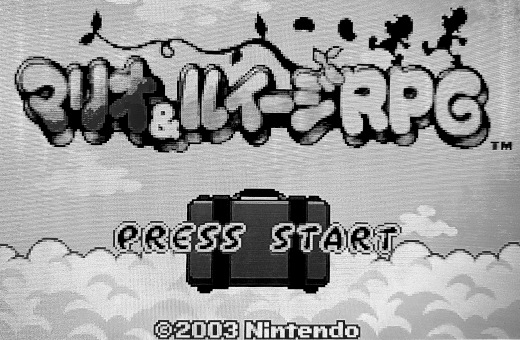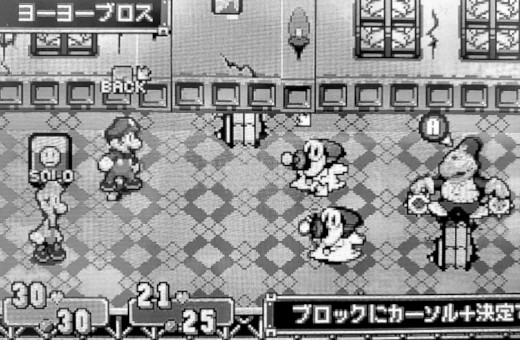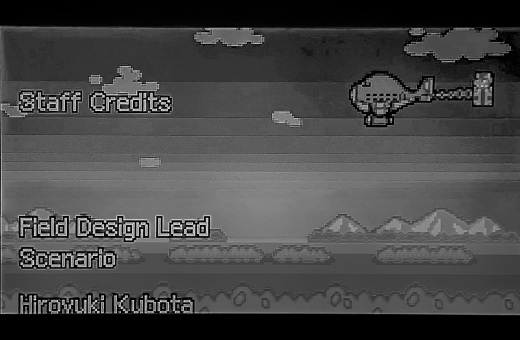Mario & Luigi RPG1 has been a game I’ve held in high regard since I played it on release. Unlike other Mario RPGs, I've revisited Superstar Saga quite often in comparison. At least once every few years I would play through a good chunk of the game, usually to a bit past the halfway point of the game where the star bean piece search begins.

On this playthrough I opted to go through on both the Japanese GBA version and the North American 3DS version. The Japanese GBA version comes with a quirk I didn’t find out until after I’d finished this playthrough; the Japanese GBA version actually relased after the North American release and is slightly revised. My intent was to experience the original script and gameplay balance, but the Japanese GBA version ended up giving me a more balanced experience compared to the NA release. Several enemy HP/exp values were adjusted and egregiously powerful badges (Mush Badge) were significantly nerfed. The core change that mattered to me was during the Cackletta Soul fight on JP the game doesn’t roll a speed check for the initial turn, so the final boss during my experience was very smooth compared to how I’ve always remembered the fight. On NA you need to pass a 120 speed check or Cackletta acts first while both of the bros are at 1 HP, which is where the big difficulty spike of the fight comes from. Cackletta’s attacks aren’t particularly hard to dodge, but they have ambiguous hitboxes and you have to dodge three different attacks before getting and action. JP GBA skips the speed check and lets you act first to immediately heal which makes the fight trivial in comparison. The 3DS remake also skips that speed check but allows for instant retry to the the beginning of Cackletta Soul fight, without needing to reload a save from before the initial Bowletta fight. So the 3DS version is much more forgiving regardless.
Balances changes between versions aside, I did enjoy the graphics of the 3DS version. The art has a beautiful painted style while retaining *almost all of the detail from the GBA original.
*Almost is ignoring the “Mario Mandate” changes to the character designs. Gone are the weird toads and koopas of all shapes and sizes, in their place are just recolors of the base designs used as the current Mario series standard. Weirdly even some enemies have been changed to tone down their unique attributes. No longer to the lakitus and koopa troopa equivalents have bean sprouts coming from their heads, trailed by vines and leaves. They’ve been cleaned up and toned down to remove excess “bean” features. It’s a strange choice but it doesn’t really affect much, outside of reinforcing Mario mandate memes. (Example seen here.)
Superstar Saga was a game in my mind where the combat system far outweighed any other aspect of the game. With action commands that made the turn based battles feel closer to a real time action RPG. Compared to Paper Mario, the action commands in Superstar Saga may as well not even share the same name. Superstar Saga's take on action commands even further removed from the original concept of timed hits in Super Mario RPG. Instead of being a way to add an extra real-time input to attacking and defending in a turned based game, the Mario & Luigi series effectively has real time combat presented in the context of a turn based JRPG battle system.

With the context of the battle system being the central focuse I had in my mind for the game, that leads into the biggest issue I had with these playthroughs. While the combat seems like a natural, faster and more involved evolution of Paper Mario’s action commands- Mario & Luigi ends up being a rote and tedious experience. And it's not because the battle system isn't mechanically fun to interact with, the issues are in the underlying systems for how damage is calculated.
Damage scaling is heavily dependent on level checks between the brothers and enemies. The damage formula factoring in level so heavily means that it was easier for the devs to create a smooth intended difficulty gradient through the game, but the issue is that it makes most stats like POW/DEF essentially meaningless. You can dump points into them, but your level being checked against the enemy will always matter more. Stat homogeneity during playthroughs wouldn’t be an issue if there was a meaningful decision for which attacks to use in battles, but there isn’t. With the exception of fire and thunder bros lowering POW/DEF respectively, every other attack only deals damage with no other effects to consider. With the irrelevancy of stats, action choice truly is just “use the attack that simply does the most damage and you’re comfortable with the input.”
For Luigi, Knockback Bros is this attack. Unfortunately the attack is acquired very early into the game and the animation continues until you miss an input, so every battle I had (through both GBA and 3DS versions) involved Luigi using a ~30 second long attack of repeating the same action command of alternating A and B until missed. The timing window is fairly tight, so it demands quite a bit of concentration. Knockback Bros is quite fun to execute!… until you spend nearly an hour or more of your playthrough exclusively doing this input for Luigi. There’s no meaningful difference to using other attacks except they just do less damage… and all they do is damage. That’s particularly an issue because boss attack patterns aren’t very involved, with limited attacking options. If you’re not going out of your way to keep your level up with bosses through enemy encounters, you’re going to be dodging the exact same 2-3 attacks and inputting the same two bros action commands for 10-15 minutes. It’s a real drag.
Worth noting is that the 3DS version heavily increased the BP cost of bros moves and made the input windows massive, while also capping the number of hits you can do with certain attacks. While Knockback Bros. on GBA could last for over 30 seconds and have you dealing 20+ hits to the enemy, the 3DS version limits the attack to just five total hits over the duration of 9 seconds. This leads to the 3DS version having turns that feel faster in the duration of your actions, but battles having a vibe of being dredged through molasses as you double or even triple the turn counts of fights from needing to take more actions combined with wasting turns to restore BP.
It’s a good system on paper, but the level balancing combined with stats and attack choice being entirely irrelevant just turn the game into a slog in terms of actual character progression and player agency in building up the brothers. Although this being said, I've neglected to mention anything about defense. Dodging attacks is the real name of the game. Where character progression and attack choice doesn't matter, being able to dodge attacks is critical. Each enemy has their own attacking style with visual cues for what bro theyre going to target, and how they go about moving across the field to wind up their attack. Later games in the Mario & Luigi series start to go all out with having large-scale setpiece styled attacks for you to dodge, which makes me feel as if the developers also realized that unique enemy attacks to dodge was the only aspect of the combat with truly lasting appeal.

It's truly a mixed bag because learning patterns and visual tells to dodge attacks is a blast, and I've never played any other turn based JRPG with real time combat executed like this. It feels significantly more engaging to me than time timed hit concept of guarding damage in Super Mario RPG or Paper Mario. The drawback is that they couldn't find a way to make customizing the brothers unique, or giving you real options in combat. While the dodging is unique between every enemy, they aren't unique between playthroughs. When you're replaying an RPG, the attacks enemies use against you will always be from the same pool of actions. The difference is purely going to be in actions the player makes for how they route their way through the game and build their characters, which leads into what actions and strategies players will employ during battles. In Mario & Luigi you will only ever dodge the same attacks and use the exact same moves with the same homogenous stats that don't affect much.
With the combat aside, there's a big saving grace for the game, the dialogue and animations. The witty writing style combined with goofy, overly expressive animated sprites adds so much life and interest to what's a fairly trite story. The short run time of the game paired with fantastically cartoon-animation inspired graphics, being driven by humorous dialogue and cutscenes will keep you engaged enough to get through the game even when the combat doesn’t hold it together. The pacing does have issues with the bean shard quest being the biggest offender. The pace of the game screeches to a halt while you do a series of long fetch quests wandering around the kingdom, but really the "why" and "what" of your quest doesn't matter a whole lot in this game. It feels as if you're just waiting to see what new cool enemy designs and attack patterns you'll be pitted against, and what strange character the brothers will get mixed up with next.
It’s a good game overall. I enjoyed my time with it, but it has so many issues that prevent replays from being enjoyable. This explains my previous history with the game a lot. Where I would start up a new file every few years and play about up to the star bean piece fetch quest before dropping the game from the combat becoming repetitive.
— Juni - October 1st, 2023 —

